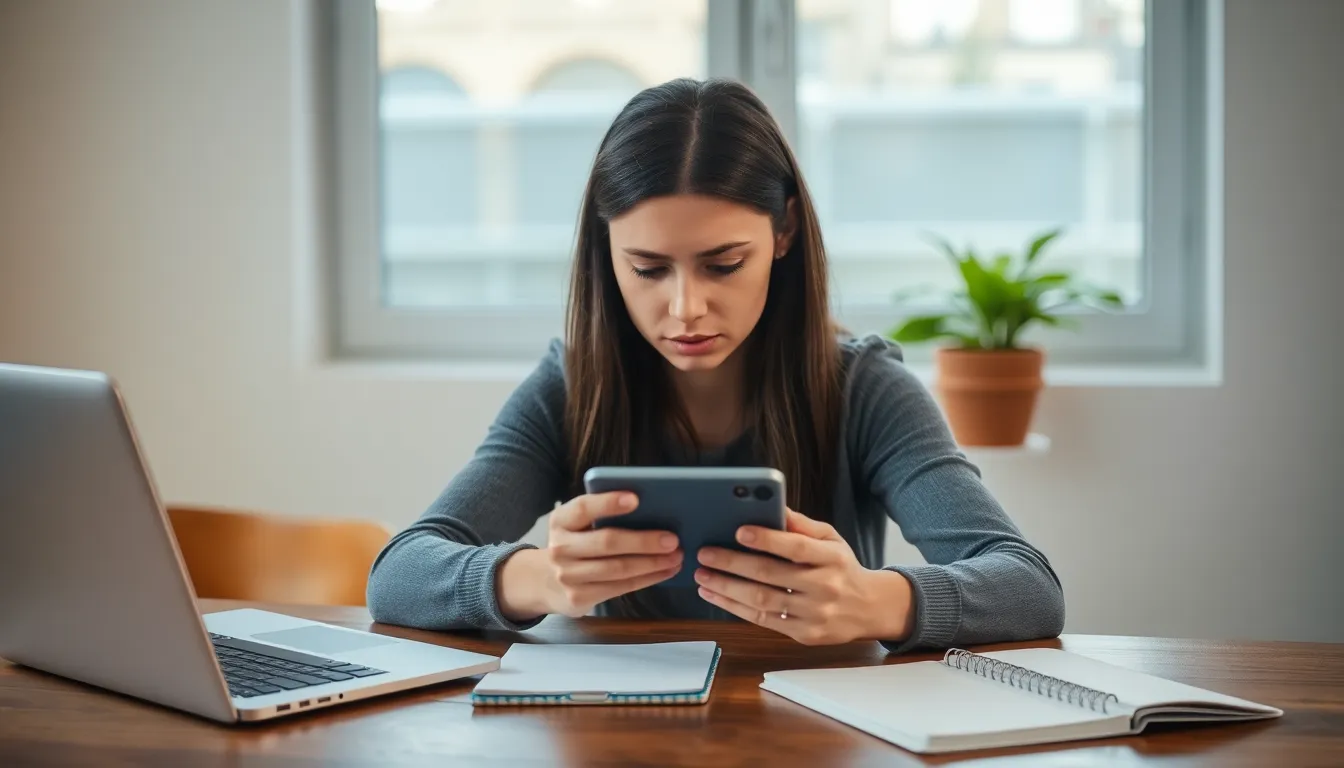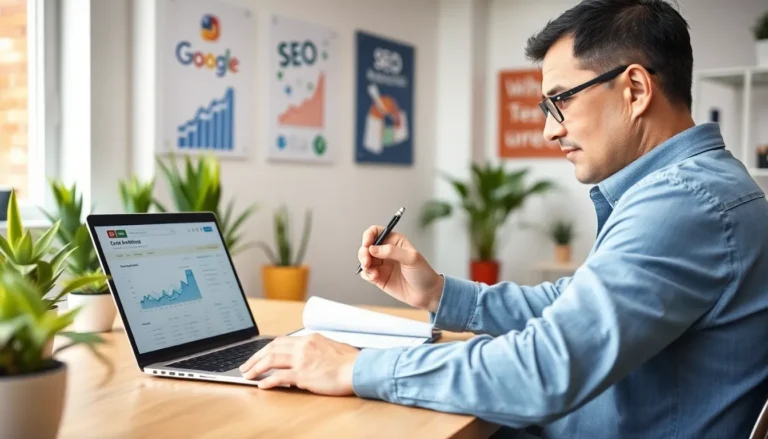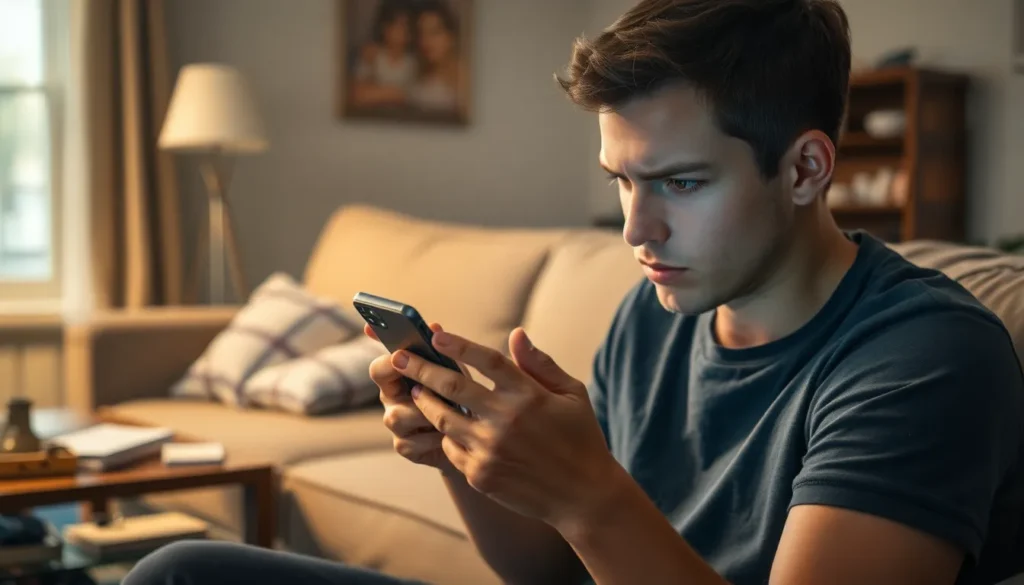Table of Contents
ToggleIn a world where privacy feels like a myth, the thought of someone eavesdropping on your iPhone can send shivers down anyone’s spine. Imagine your secrets spilling out like a poorly sealed bag of chips. But fear not! There are ways to find out if your trusty device is playing host to unwanted guests.
Signs Your iPhone May Be Tapped
Several signs indicate a potential tap on an iPhone. It’s essential to recognize these symptoms to safeguard personal information.
Unusual Battery Drain
A sudden decrease in battery life can be alarming. If an iPhone discharges faster than usual, it might suggest spyware activity. Monitoring battery performance reveals discrepancies; normally, apps use power efficiently. Checking the battery usage settings might highlight unfamiliar apps that consume excessive resources. Frequent charging interrupts daily tasks, indicating a need for vigilance.
Increased Data Usage
Unexplained spikes in data usage can raise concerns. If data consumption exceeds expected limits, unauthorized apps might be operating in the background. Regularly reviewing data analytics provides insight into unusual patterns. Unexpected notifications about data usage limits can signal potential security issues. Staying informed about apps and their data consumption helps maintain control over personal devices.
Strange Sounds During Calls
Experiencing odd noises during phone calls can be unsettling. Unusual clicks or audio distortions might indicate interception. These sounds occur intermittently or consistently, raising red flags about eavesdropping. Proceeding with caution is advisable when faced with strange audio disturbances during conversations. Keeping conversations sensitive may require using alternative communication methods to ensure privacy.
Methods to Check If Your iPhone Is Tapped

Determining if an iPhone is tapped requires a few methods. Users can take specific steps to identify potential security breaches.
Check for Unwanted Apps
Monitoring the apps installed on the iPhone reveals potential issues. An unexpected app may indicate unauthorized access. Users should navigate to Settings, then tap on General, and select iPhone Storage to view installed apps. Look out for unfamiliar apps, particularly those that don’t correspond to recent instals or updates. Removing these applications can enhance device security.
Inspect Your Settings
Examining the iPhone’s settings provides additional insights into security. Changes in notification settings or enabled permissions for unusual apps can raise red flags. Users must review privacy settings under Settings, then Privacy, and check for any unusual apps with access to contacts, location, or microphone. If any settings seem incorrect, adjusting them promptly can help protect privacy.
Use Security Apps
Employing dedicated security apps offers another layer of protection. Several reputable security apps can scan for spyware and malware effectively. Users are encouraged to research trusted security applications and install them from the App Store. Running regular scans helps identify threats and ensures the device remains secure against unauthorized intrusions.
Precautionary Measures
Implementing precautionary measures enhances an iPhone’s security against potential tapping. Users can take steps to safeguard their devices effectively.
Regular Software Updates
Updates often include critical security patches. Regularly checking for software updates ensures the device operates with the latest protection features. Enabling automatic updates helps users stay current without manual checks. Apple usually releases updates that address vulnerabilities, reducing the risk of unauthorized access. Users should navigate to Settings, choose General, and select Software Update to confirm they are using the most recent version available.
Enable Two-Factor Authentication
Two-factor authentication drastically improves account security. Users can enable this feature in their Apple ID settings. Once activated, this setting requires a verification code along with the password during sign-in attempts. Even if someone else obtains a password, access remains restricted. Apple’s two-factor authentication adds an additional layer of protection, making unauthorized access far less likely.
Use Strong Passwords
Creating strong passwords is vital for protecting personal information. Passwords should combine letters, numbers, and special characters while avoiding easily guessable details like birthdays or common words. Users can consider using a password manager to store and generate complex passwords securely. Regularly changing passwords adds another layer of defense. Secure passwords significantly reduce the chances of unauthorized access to sensitive information on the iPhone.
What to Do If You Suspect Tapping
If there’s suspicion of tapping, taking immediate action is crucial to ensure privacy and security.
Contact Your Carrier
Reach out to the carrier for assistance if tapping is suspected. Many carriers can help identify any unusual activity on the account. Discuss options for monitoring calls or texts to detect unauthorized access. Additionally, they may offer insight on further protective measures. Some carriers provide specialized services to enhance account security, making direct communication essential.
Restore Your iPhone
Restoring the iPhone to factory settings can eliminate unauthorized access. Before proceeding, back up personal data stored on the device. After backup, access the settings, navigate to General, then select Reset. Choose Erase All Content and Settings to reset the device completely. This process helps remove any potential spyware or malicious software, giving users a fresh start with their iPhone security.
Seek Professional Help
Engaging a professional can provide expert assistance in suspecting tapping. Many specialists focus on digital security and can conduct thorough evaluations. Services might include scanning the device for hidden spyware or malware. Additionally, professionals can offer personalized security advice tailored to individual needs. This step often provides peace of mind that the device is secure from potential threats.
Maintaining privacy on an iPhone is crucial in today’s digital age. By staying vigilant and recognizing the signs of potential tapping, users can take proactive steps to safeguard their personal information. Regularly monitoring device settings and installed apps can help identify any unauthorized access.
Implementing security measures like two-factor authentication and strong passwords further enhances protection. If there’s any suspicion of tapping, reaching out to the carrier or seeking professional assistance can provide additional support. Taking these actions ensures that users remain in control of their devices and can enjoy peace of mind regarding their privacy.







